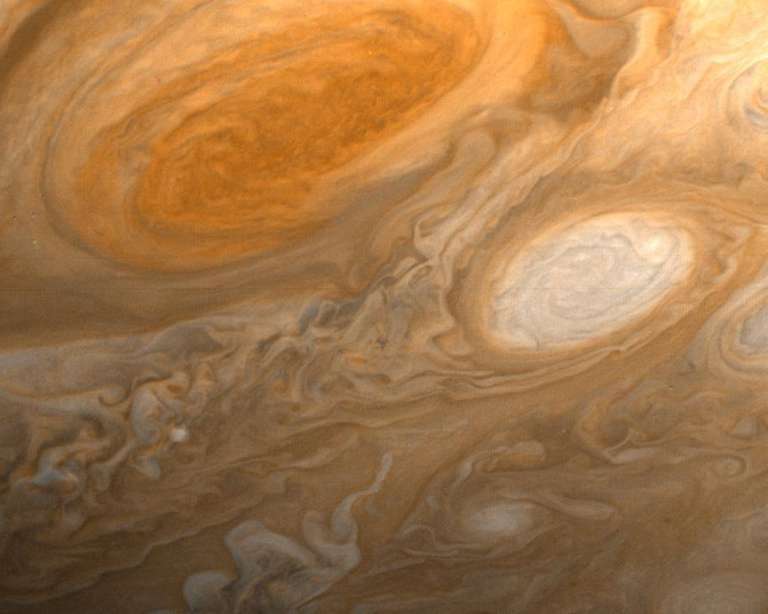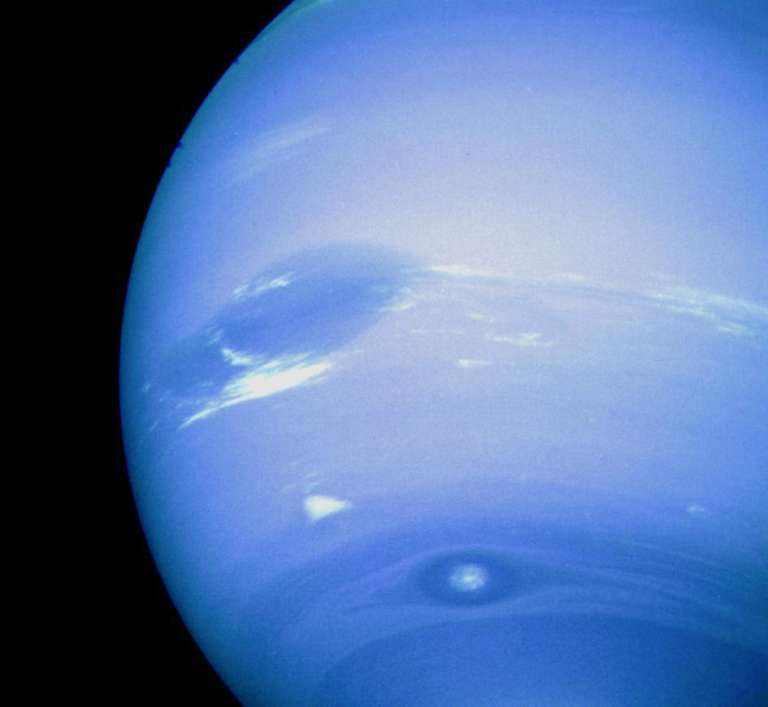A.J.S. Rayl • Sep 05, 2002
The Stories Behind the Voyager Mission: Jurrie van der Woude
For our special issue of The Planetary Report honoring Voyager (September/October 2002), we asked a handful of people, each closely involved with the mission, to name their favorite image. Then we asked them to tell us why-not so much for the images' scientific content (easy enough to find) but for the pictures' personal significance-what memories they stirred up.
We asked Jurrie van der Woude, who for 25 years worked in the Jet Propulsion's Laboratory's Public Affairs Office as Image Coordinator, to give us his choice. It was Jurrie who, working closely with the Voyager imaging team, chose the best images to release to the press. As he thought out loud, running through the list of options, we caught a glimpse of the nostalgia and emotion the Voyager mission evokes in those who's work revolved around it. Here's what Jurrie had to say before he could settle on a choice:
"There is no way I can name my most favorite photograph or image because there were four planets, tens of moons and thousands of rings, and each of them had their own character and attractiveness.

I clearly remember when the first images, in true color, of Jupiter's Great Red Spot were received in 1979. They were so artistic, it was almost unbelievable that they were also of tremendous scientific importance. In those days, most major newspapers still printed in black and white on the cover. Once in a while, a very special photograph was printed in color. Bob Cook, who was the science correspondent for the Boston Globe at the time, saw these photos with the rest of the world. But the following morning, this gentleman, a typically reserved, very dignified "Norman Rockwell-type" Yankee, gave an unexpected yell, leapt out of his chair and kicked his heels. He had his editor on the phone who'd told him the Great Red Spot was on the front page. It was the first time, in its roughly150 years of existence, that the very conservative Boston Globe had printed a photo in color!

"The farewell shot of Saturn is in a class by itself because it was the first time we had seen a planet in a manner impossible from Earth, as if we ourselves had passed the planet and looked back at it.
"I think that after both the spacecraft had passed by Saturn, a different era-a second half of the story started. Voyager 2, the one continuing on this journey, had reappeared from behind the planet with a major problem-the scan platform was stuck. So, in spite of the fact that it would be five years before we reached Uranus, there was an awful lot of work to be done. The computers had to be upgraded, data compression needed to be installed and uploaded to the spacecraft. And the problem with the scan platform had to be solved.
"At this point the Voyager spacecraft reminded me of what it's like to raise a child-you have this little thing and you have to teach it what to do. You're more concerned than you have to be. Then you let it alone and its does fine by itself. The spacecraft stopped being 1,800 pounds of nuts and bolts-it became something that was on your mind 24 hours a day. It did such wonderful things and it made everyone so proud that it was no longer a spacecraft. It was a family member. It was a person. How crazy it sounds, yet everybody around was just as nuts about it. How do you put that into words?

"The shots of volcanoes on Io were extremely exciting because they were unexpected. Moreover, they were truly good looking images. At Uranus we encountered another stunning moon: Miranda, The pictures of it generated more geologic questions than they answered.
"Then Neptune appeared for the first time in its full glory. So unknown, so far away, so cold, No one expected Neptune to be that exciting, It turned out to be incredibly pretty-a serene blue with some storms in its atmosphere. So, I think my most memorable photograph is that partial global shot that shows the Great Dark Spot in the equatorial region; as well as that distinct eye, that big storm in the southern hemisphere. Also visible is the little white cloud formation, nicknamed "Scooter," that moved around the planet much faster than the other storms. Neptune was so unexpectedly beautiful to me that I must say that this is my favorite photograph. For sheer beauty, I think there are only two shots I'd hang in my living room-the one of Neptune I just described, and the close-up of the Great Red Spot on Jupiter.

"After we met that lovely blue planet we sailed right over its north pole and, five hours later, we met Triton-another amazing moon. And when that encounter was over we came to the realization that the curtain had fallen. Really, it had come to an end.
"The Voyager project was to me, and I think to everybody involved with it, the most epic journey in the history of our species. The memories are still overwhelming to this day."
See the September/October 2002 issue of The Planetary Report for more Voyager favorites, chosen by those who were there. The Planetary Report is an exclusive publication of The Planetary Society.
Support our core enterprises
Your support powers our mission to explore worlds, find life, and defend Earth. You make all the difference when you make a gift. Give today!
Donate

 Explore Worlds
Explore Worlds Find Life
Find Life Defend Earth
Defend Earth

